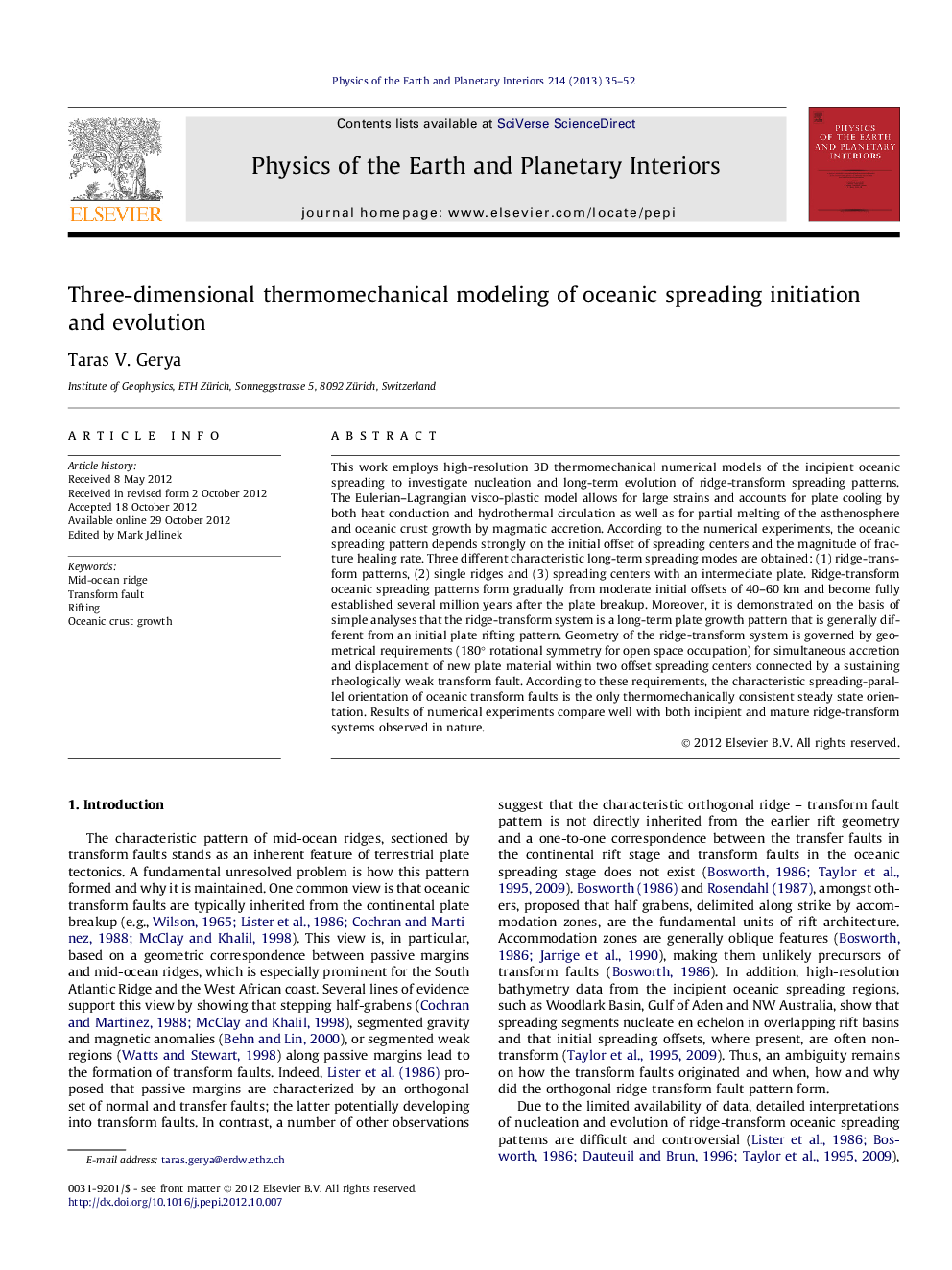| کد مقاله | کد نشریه | سال انتشار | مقاله انگلیسی | نسخه تمام متن |
|---|---|---|---|---|
| 4741756 | 1641527 | 2013 | 18 صفحه PDF | دانلود رایگان |
This work employs high-resolution 3D thermomechanical numerical models of the incipient oceanic spreading to investigate nucleation and long-term evolution of ridge-transform spreading patterns. The Eulerian–Lagrangian visco-plastic model allows for large strains and accounts for plate cooling by both heat conduction and hydrothermal circulation as well as for partial melting of the asthenosphere and oceanic crust growth by magmatic accretion. According to the numerical experiments, the oceanic spreading pattern depends strongly on the initial offset of spreading centers and the magnitude of fracture healing rate. Three different characteristic long-term spreading modes are obtained: (1) ridge-transform patterns, (2) single ridges and (3) spreading centers with an intermediate plate. Ridge-transform oceanic spreading patterns form gradually from moderate initial offsets of 40–60 km and become fully established several million years after the plate breakup. Moreover, it is demonstrated on the basis of simple analyses that the ridge-transform system is a long-term plate growth pattern that is generally different from an initial plate rifting pattern. Geometry of the ridge-transform system is governed by geometrical requirements (180° rotational symmetry for open space occupation) for simultaneous accretion and displacement of new plate material within two offset spreading centers connected by a sustaining rheologically weak transform fault. According to these requirements, the characteristic spreading-parallel orientation of oceanic transform faults is the only thermomechanically consistent steady state orientation. Results of numerical experiments compare well with both incipient and mature ridge-transform systems observed in nature.
Figure optionsDownload as PowerPoint slideHighlights
► We present new 3D thermomechanical numerical model of oceanic spreading.
► Three different characteristic long-term spreading modes are obtained.
► Orthogonal ridge-transform spreading pattern is not inherited from breakup.
► Numerical results compare well with both incipient and mature ridges.
Journal: Physics of the Earth and Planetary Interiors - Volume 214, January 2013, Pages 35–52
